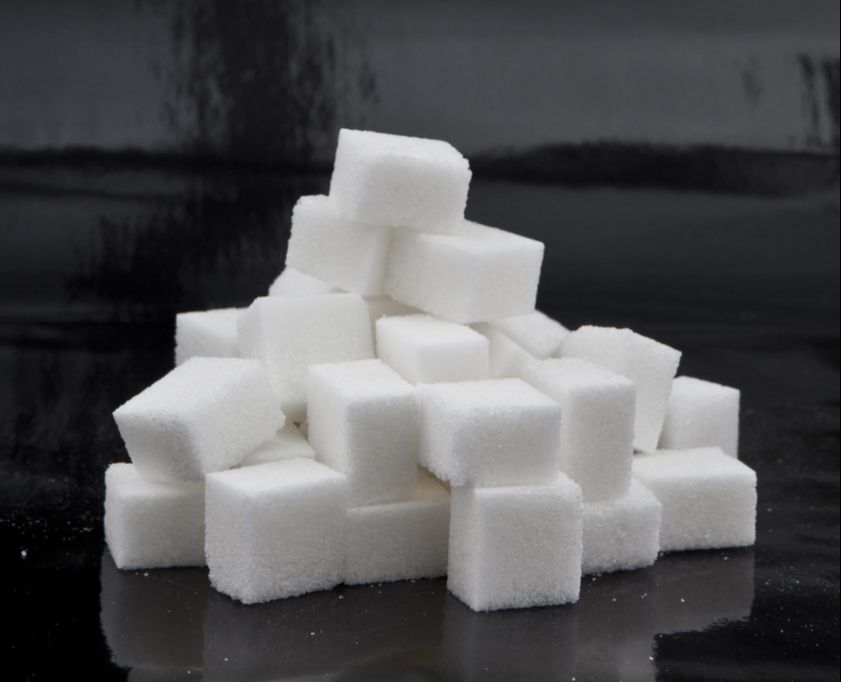|
By Mariel Sander
Columbia students are no strangers to sugar. Sometimes it seems like not a week goes by without a club or company giving out free Insomnia cookies on Low Beach or selling Krispy Kremes in Lerner. So when my roommate Amelia told me she’d gone “sugar-free” over the summer, I laughed. We had consumed ridiculous amounts of snack foods together throughout our freshman year and the idea that she had suddenly replaced cookies with carrot sticks and brownies with broccoli seemed absurd. But she wasn’t joking. She’d stopped consuming ice cream, bubble tea, and even foods like bacon and marinara sauce, things that I hadn’t even realized contained added sugars. As someone with a huge sweet tooth (deep fried cheesecake with whipped cream and sprinkles is my all-time favorite dessert), I thought it couldn’t hurt to do a little more research before following my roommate’s example. Yes, we all know eating a lot of sugar is unhealthy—but was it really as bad as my roommate seemed to think? According to the World Health Organization, the answer is an emphatic yes. A 2015 report stated that added sugars should sit at a measly 5% of our total energy intake. For context, if you eat 2000 calories a day, one can of soda at 150 calories already puts you at 7.5%. This means that even if you eat salad for the rest of the day, you’ve already exceeded your recommended daily added sugar intake. So why exactly is added sugar so bad for you? To start, the word “sugar” refers to three main types of sweetener. The first, “added sugars”, includes high fructose corn syrup, sucrose, and dextrose. There are also “natural sugars”, fructose in honey or lactose in milk. Finally, there are artificial sweeteners that are marketed as “sugar replacements” like aspartame, stevia, or sucralose. As it turns out, not all sugars are created equal. Several animal studies investigated the effects of different sugars on memory, anxiety, and weight gain. In an experiment at Waikato University in New Zealand, 45 rats were fed either sucrose or honey (which contains naturally occurring fructose) for 13 months. Scientists assessed memory through an Object Recognition test and a Y maze. Additionally, they studied the anxiety levels of the rats by using an Elevated Plus Maze, a cross-shaped contraption open on one side and designed to play rats’ fear of open areas against their desire to explore. Throughout the 13-month period, the scientists found that the honey-fed rats displayed significantly less anxiety compared to rats on the sucrose diet. Furthermore, by 9 months, assessments indicated that honey-fed rats had better spatial memory than sucrose-fed rats and the control (sugar-free) group of rats. Honey, which contains numerous antioxidants and bioactive compounds, seemed to be the key factor here since honey-fed rats tended to outperform both the rats on added sugar and the rats who consumed no sugar. The researchers then reran this experiment, this time measuring weight gain of the rats. Overall, they found that rats on a honey or sugar-free diet had 23.4% less weight gain and 9.2% less body fat than those fed with sucrose. This may be explained by the different metabolic pathways that sucrose and fructose are involved in, which elicit different hormonal reactions. The disparity in weight gain could also stem from the fact that digestion of honey produces hydrogen peroxide, which imitates the hormone insulin and affects glucose processing in the body. And what about “sugar replacements”? If you look at the label on a bottle of Coke Zero, you’ll see—as the name suggests—a string of zeroes. Zero calories, zero sugars. However, if you look at the ingredients, you’ll spot an artificial sweetener called aspartame. It’s not technically sugar, so does that make it a guilt-free way to satisfy your sweet tooth? Earlier this year, an online review published findings on the effects of artificially sweetened beverages (ASBs) compared to those of sugar-sweetened beverages (SSBs) on people. The article cited an experiment proposing that the consumption of ASBs led to the development of glucose intolerance, which in turn adversely affected the essential microbes in the digestive tract. In addition, it was hypothesized that ASBs trigger “compensatory mechanisms”. The artificial sweeteners in ASBs seem to interact with our sweet taste receptors in a way that causes our bodies to crave sugar and our appetites to increase. On a psychological level, ASBs can also be trouble—if we believe that we’re consuming less calories, we may feel more inclined to consume more desserts. It is important to keep in mind that the data from many of these experiments might have also been subject to cherry picking. Historically, organizations with a stake in the result, such as the Sugar Research Foundation, preferentially funded studies that downplayed the negative health effects of sugar in order to support the sugar industry. A similar problem arises in many studies of ASBs and SSBs, as much of the research done is industry-sponsored, leading to conflicts of interest that may bias the results. With all this in mind, for the month of October, I decided to give myself a challenge: I went on an added sugar-free diet. After the first week, I noticed a marked difference in the amount of cravings for sugary snacks I had throughout the day. This said, come November 1st, I still plan on going to Duane Reade and stocking up on discounted Halloween candy. But instead of binge-eating it, I’ll be following the tried and true motto of eating in moderation. There’s no point in trying to sugarcoat it: the amount of added sugar we’re accustomed to consuming far exceeds the amount we actually need. Mariel Sander is a Columbia College sophomore studying Neuroscience and English. She is a staff writer for Columbia Science Review. She is currently counting down the days until she can eat the stockpile of Halloween candy in her room.
0 Comments
Leave a Reply. |
Categories
All
Archives
April 2024
|

